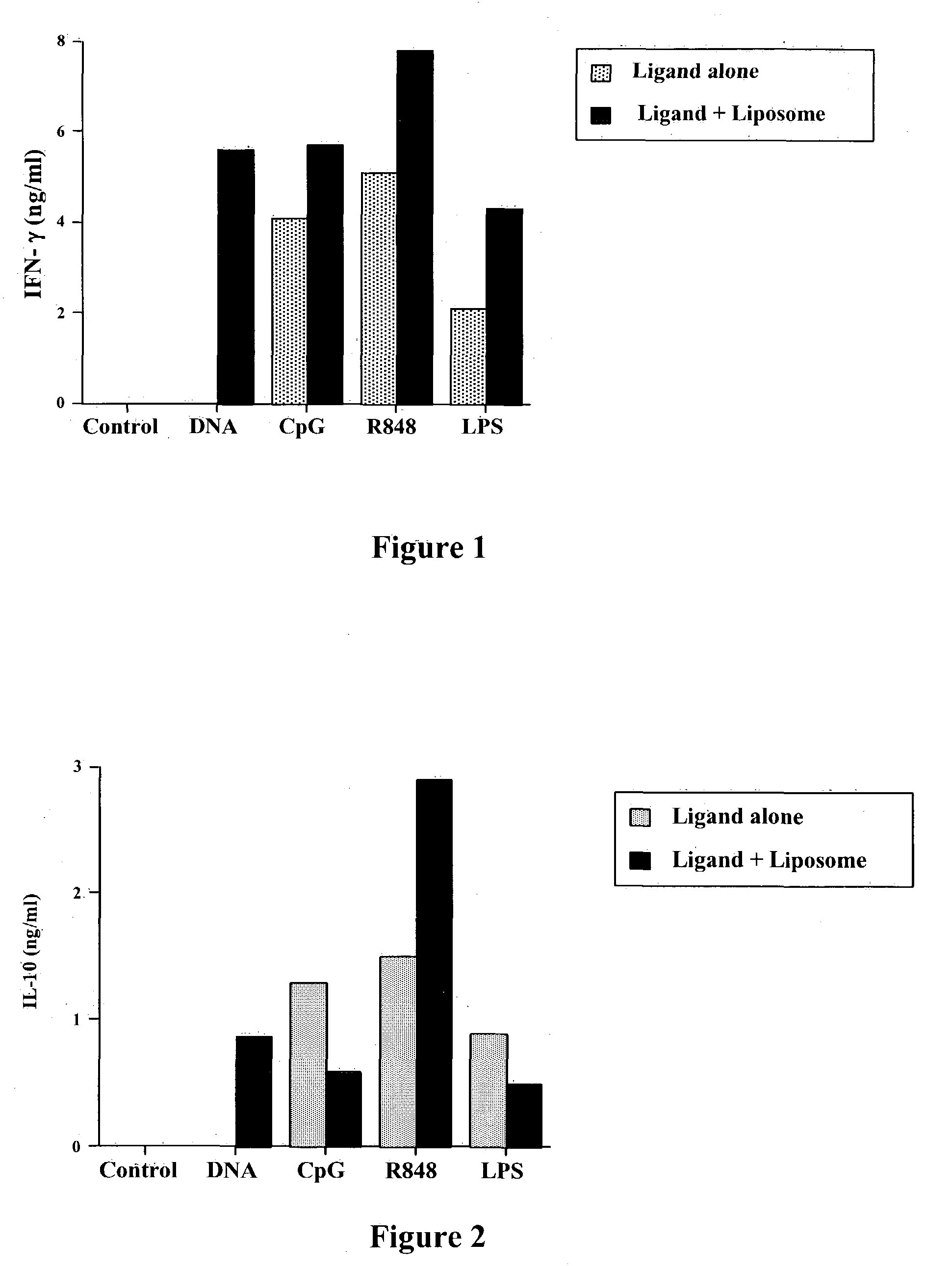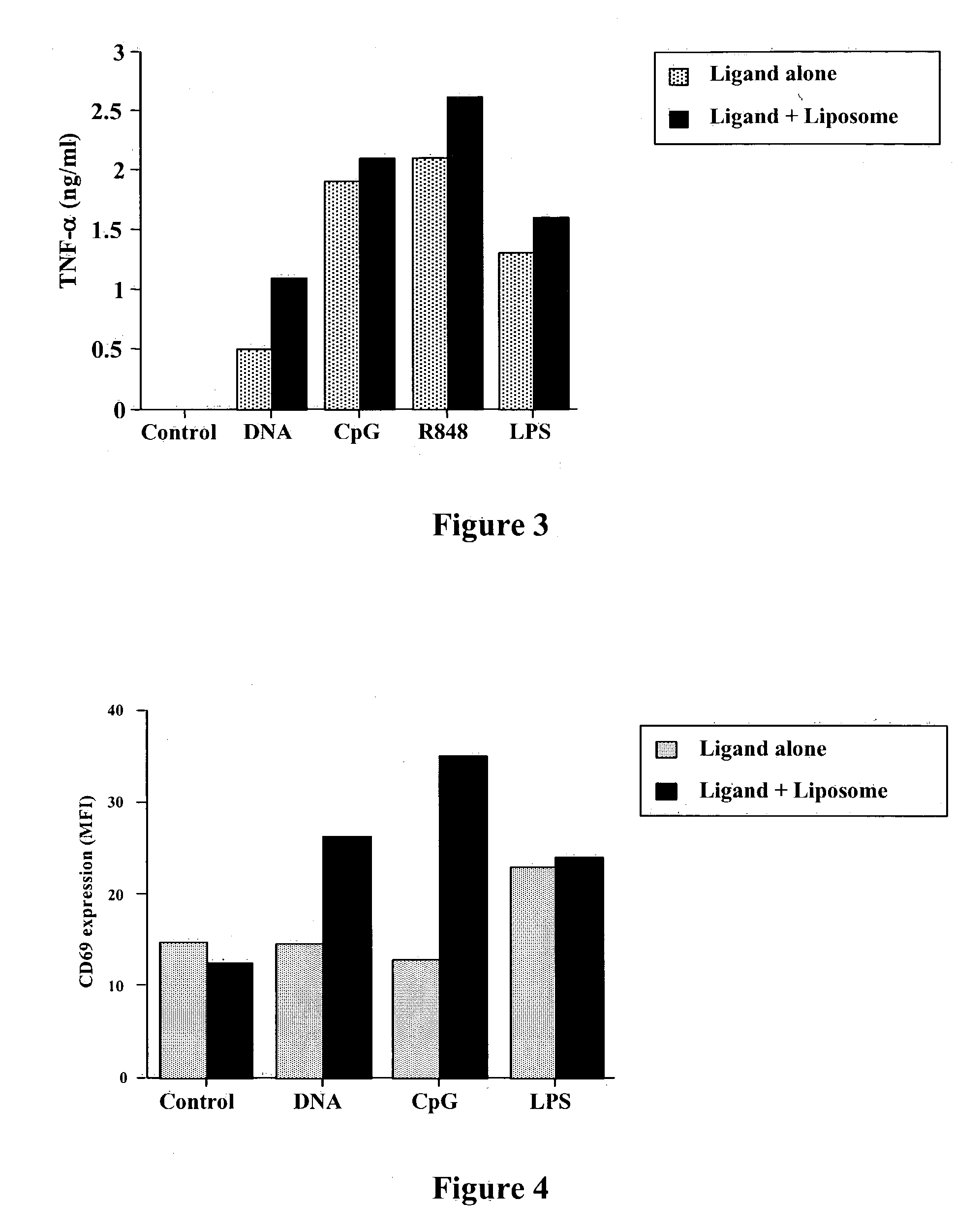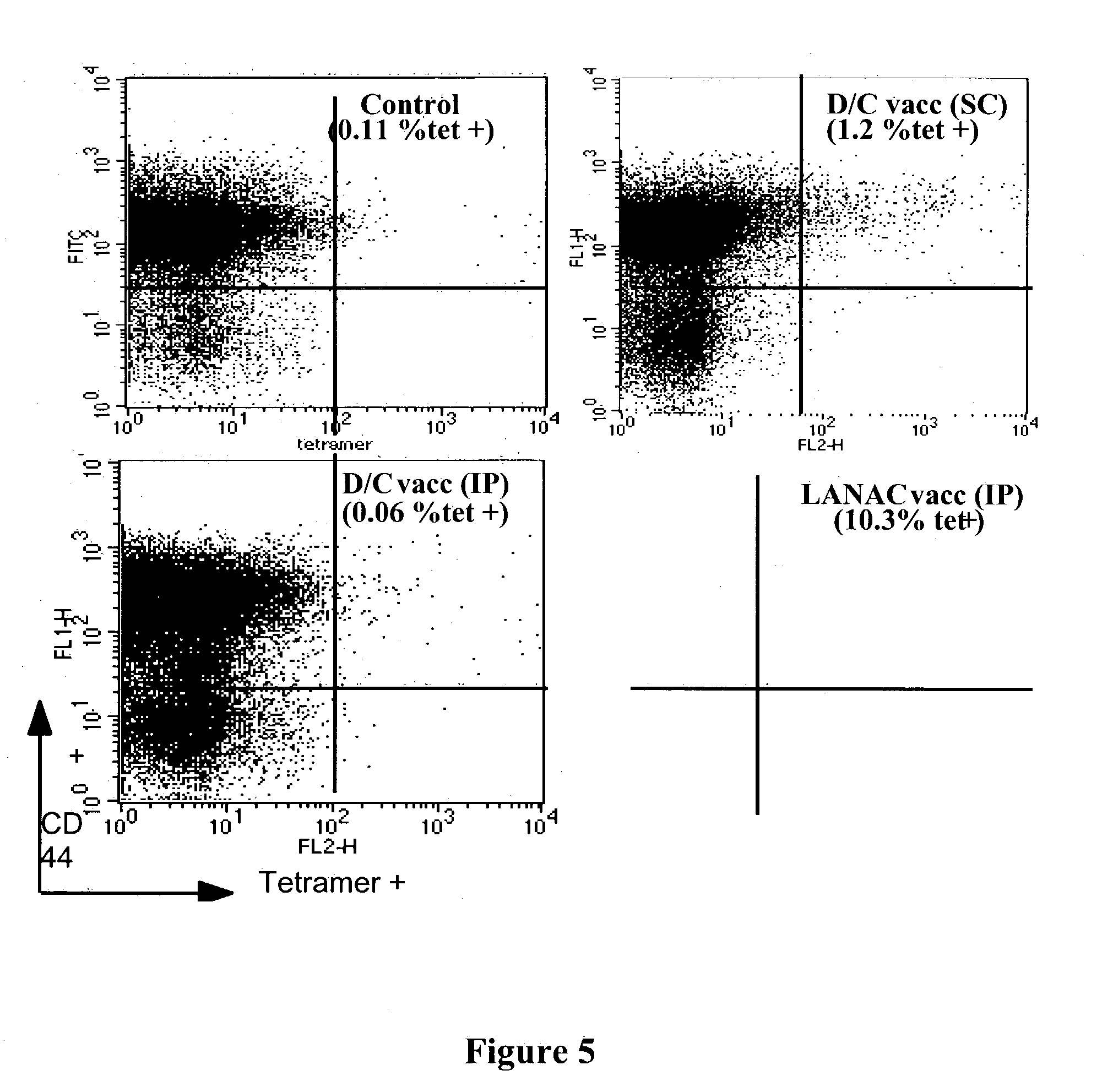Vaccines using pattern recognition receptor-ligand:lipid complexes
a technology of lipid complexes and receptors, applied in the field of vaccines using pattern recognition receptorligands, can solve the problems of inability to induce non-immunogenicity, the propensity of viral vaccines to induce non-immunogenicity, and the use of killed cells,
- Summary
- Abstract
- Description
- Claims
- Application Information
AI Technical Summary
Benefits of technology
Problems solved by technology
Method used
Image
Examples
example 1
Liposomes Markedly Enhance Activation of Innate Immunity and IFN-γ Release After Activation by Pattern Recognition Receptor Ligands (PRRL)
[0212] The ability of cationic liposomes to augment immune activation elicited by PRRL was assessed in vitro, using a spleen cell assay. Spleen cells Were prepared from normal ICR mice and added at a concentration of 5×106 / ml in individual wells of 24-well plates. A series of different PRRL, including plasmid DNA (“DNA”), CpG oligonucleotides (“CpG”), an imidazoquinoline (R-848; InVivogen), and purified E coli endotoxin (“LPS”) were mixed With a cationic liposome to form complexes. The cationic liposome was prepared using equimolar amounts of DOTIM (octadecenoyloxy-ethyl-2-heptadecenyl-3-hydroxyethyl) and cholesterol and rehydration in a solution of 5% dextrose in water. To form specific PRRL-lipo-some complexes, 30 μmol of cationic liposome was added to 30 μl 5% dextrose in water, followed by addition of 3 μg of each PRLL and mixing by pipettin...
example 2
Liposomes Alter Release of IL-10 After Activation by Pattern Recognition Receptor Ligands (PRRL)
[0213] The ability of liposomes to enhance release of a key immunosuppressive cytokine of the innate immune system was assessed using the spleen cell assay described above in Example 1. PRRL, with or without liposomes, were added at a final concentration of 500 ng / ml for 18 hours. The release of IL-10 into the supernatants was then assessed using an ELISA assay. Surprisingly, the data shown, in FIG. 2, illustrate that combining liposomes with PRRL can significantly alter the immunological properties of PRRL, by either augmenting release of IL-10 (eg, with DNA or R-848 as PRRL) or inhibiting IL-10 release (eg, CpG or LPS as PRRL). For example, liposomal-LPS strongly inhibited release of IL-10, compared to LPS alone, as did liposomal-CpG, whereas liposomal-R848 actually increased IL-10 release. Thus, formation of liposome-TLR ligand complexes alters the release of cytokines elicited by the...
example 3
Liposomes Enhance Release of TNF-α After Activation by Pattern Recognition Receptor Ligands (PRRL)
[0214] The ability of liposomes to enhance release of a second key stimulatory cytokine of the innate immune system was assessed using the spleen cell assay described above in Example 1. PRRL, with or without liposomes, were added at a final concentration of 500 ng / ml for 18 hours. The release of TNF-α into the supernatants was then assessed using an ELISA assay. The data shown, in FIG. 3, illustrate the liposome-complexed PRRL were more potent immune stimulators than the PRRL alone and provide further support for the principal of modification of PRRL properties by liposomes.
PUM
| Property | Measurement | Unit |
|---|---|---|
| size | aaaaa | aaaaa |
| size | aaaaa | aaaaa |
| time | aaaaa | aaaaa |
Abstract
Description
Claims
Application Information
 Login to View More
Login to View More - R&D
- Intellectual Property
- Life Sciences
- Materials
- Tech Scout
- Unparalleled Data Quality
- Higher Quality Content
- 60% Fewer Hallucinations
Browse by: Latest US Patents, China's latest patents, Technical Efficacy Thesaurus, Application Domain, Technology Topic, Popular Technical Reports.
© 2025 PatSnap. All rights reserved.Legal|Privacy policy|Modern Slavery Act Transparency Statement|Sitemap|About US| Contact US: help@patsnap.com



